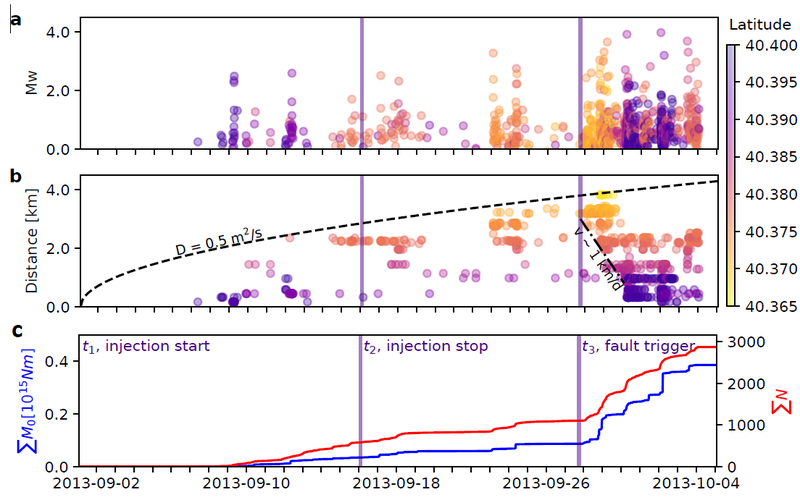Seismicity at the Castor gas reservoir, offshore Spain, was controlled by pore pressure diffusion and the failure of loaded asperities on a shallow fault
Aug 30, 2021
An international team led by scientists at GFZ Helmholtz Centre Potsdam, in collaboration with colleagues by Spanish, Italian and US institutions, where collaborates Estefania Blanch from the department of Physics of the EPSEB, is publishing a new scientific work on induced seismicity in Europe in the Journal Nature Communications.
The study focuses on the 2013 seismic sequence at the Castor platform of a former oil field, about 20 km offshore the coast of Valencia, Spain. During the initial phase of the development of a gas storage facility in the former oil field, thousands of earthquakes with magnitudes below 4.1 took place after the injection of gas into the depleted layers of the reservoir. While similar gas storage operations worldwide are typically not stimulating substantial seismicity, the Castor sequence remains to date the most significant case of seismicity related to this type of industrial operations in Europe.
The new study employs a combination of advanced seismological techniques applied to an enhanced waveform dataset to better understand the seismogenic process and the geometry of activated fault, which remained to date debated.
The new analysis identifies about 3,500 earthquakes, which took place at shallow depth between September and early October in the vicinity of the Castor injection platform.The study reveals for the first time three phases of the crisis. The first phase, accompanying gas injection from early to mid-September, was characterized by weak seismicity, progressively growing in magnitude. The injection stop marks the beginning of a second phase, which will last until end of September, where seismicity slowly migrated towards SW, driven by pore-pressure diffusion. The third phase, lasting until early October, saw a fast, backward migration, with the occurrence of all largest earthquakes as the failure of loaded asperities. Seismicity mostly affected a secondary fault, located close below the reservoir, and dipping opposite from the reservoir bounding fault.
The study demonstrates that a detailed view of the dynamics of induced seismic sequences can be resolved even in the lack of a dense local monitoring network, offering a benchmark for similar future studies elsewhere.
The insights are important also in the light that the Castor project has been abandoned after the occurrence of the earthquakes and the question of predictability of the risks and responsibility for such types of events are under public debate.

Share: